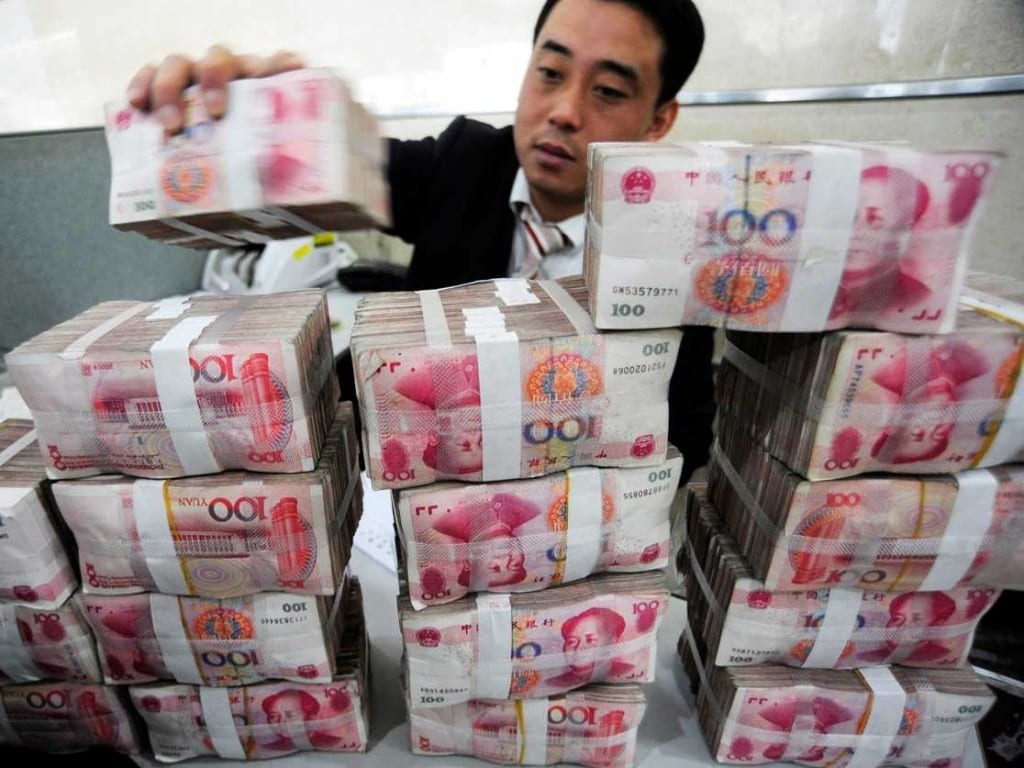China’s broadest measure of new credit dropped sharply after a record surge a month earlier.
Aggregate financing was at 780.2 billion yuan ($120 billion) in February, according to a report from the People’s Bank of China on Friday, compared with the median forecast of 1.84 trillion yuan in a Bloomberg survey. New yuan loans were 726.6 billion yuan, compared to the estimate of 1.2 trillion yuan.
China’s money supply increased 13.3 percent from a year earlier, the PBOC said, less than the 14 percent gain in the prior month and below the 13.7 percent economists projected. The numbers may reflect some distortions arising from the week-long lunar new year holiday in early February.
“February is a short month due to Chinese New Year, so that there were fewer working days for banks and other financial institutions,” Iris Pang, senior economist for greater China at Natixis SA in Hong Kong, wrote in a report. “Banks usually book most of the loans for the year in January, and fewer loans are booked in February and March.”
The central bank cut the proportion of deposits the nation’s biggest lenders need to lock away effective March 1 in an effort to keep credit flowing to the real economy. China increased its full-year M2 money-supply target, signaling that supporting economic growth has taken over as the top priority over reducing financial risks.
In January, aggregate financing soared to a record 3.42 trillion yuan, while new yuan loans also hit an unprecedented level of 2.51 trillion yuan. The strong figures were helped by banks front loading their 2016 lending targets, strong corporate bond issuance, and companies switching foreign currency loans into yuan ones.
“China’s credit data show some extreme swings in the past two months which are the result of seasonal factors,” said Mark Williams, chief Asia economist for Capital Economics Ltd. in London, who previously worked on China issues at the U.K. Treasury. “Despite the relative weakness in February, the underlying picture is of lending picking up.”
The lending drop was “a dramatic slump but it is very likely due to seasonal factors, with banks and many businesses closed for an extended period” for the holiday, he said.
Friday’s data along with the industrial production data due for release Saturday will be key to determining the immediate policy outlook, according to Tom Orlik and Fielding Chen, economists at Bloomberg Intelligence. The government releases the latest industrial output, retail sales and fixed-asset investment data Saturday at 1:30 p.m. Beijing time.
“The Lunar New Year holiday and payback for January’s record credit surge meant a downside surprise was always a possibility,” Orlik and Chen wrote in a note Friday. “Looking at the data for the first two months of the year together, loan growth remains on a rapid upward trend, and the government is targeting a faster credit expansion for 2016 as a whole.”
Industrial production and fixed-asset investment are forecast to show a continued slowdown, while retail sales probably showed improvement with a 10.9 percent gain from a year earlier, according to a Bloomberg survey of economists.
Also on Saturday People’s Bank of China Governor Zhou Xiaochuan and his top deputies hold a press conference, the chairman of state-owned asset regulator and owner SASAC will speak, and the leaders of the three main financial regulators will give a briefing.










